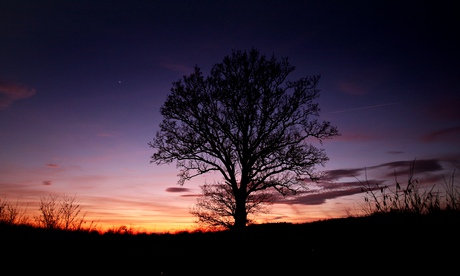
Walter Windrush, eminent but eccentric painter and poet, is very attached to what his friends call "a rotten old tree" near a brook in open land near London. To Windrush, the incomparable fantasia of earth and sky and water is "cloven as if by Alph the subterranean river and rising stark and clear of the clinging earth like the dead at the trump of doom," he explains in GK Chesterton's Four Faultless Felons (1930). He has never seen anything like it. He does not really want to see anything else.
"There was perhaps some excuse for his freak of imagination, in the momentary conditions that added mystery to the freak of nature. The stormy sky above the heath had changed from grey to purple, and from that to a sort of sombre Indian red which only brightened at the horizon in a scarlet strip of sunset. Against this background the black and bizarre outline of the tree had really the appearance of something more mystical than a natural object, as if a tree were trying to walk or a monster from the waters rising in a wild effort to fly."
A page later, Windrush is still gazing "in a fascinated manner at the pools before him which, in the last intensity of sunset, gleamed like lakes of blood. He actually remained thus for many hours, seeing the red pools turn black with night and white with moonlight, as if he were indeed some Hindoo hermit who had gone into a stony ecstasy." Soon enough, the tree becomes the centrepiece of both his garden and another strange story.

